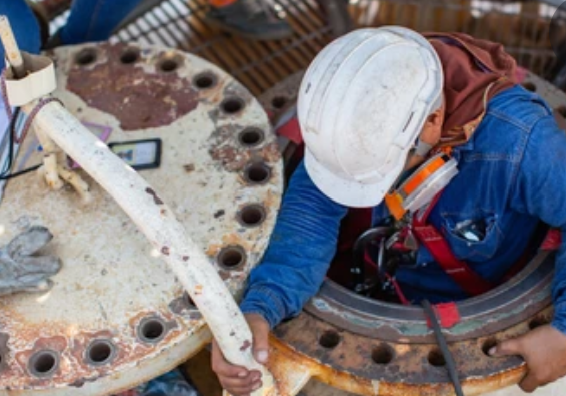A confined space is an enclosed space that is not designed for continuous occupancy to work. It has restricted entrance or exit making it difficult to offer first aid, rescue or evacuate a worker.
The confined space is a risk for the health and safety because of its design, atmosphere in it, the materials or chemicals in it, and jobs being carried out.
A confined space need not be necessarily small. Examples include tanks, sewers, boilers, manholes, wells, tunnels, storage bins, small ditches, trenches etc.
Confined spaces injure and kill many workers every year. Workers also get occupational diseases due to repeated exposure to chemicals and other materials by working in the confined space.
It is estimated that 60% of the fatalities are among the rescuers. Hence, a confined space can be more hazardous than regular workspaces. To control the risks associated with working in a confined space, a confined space hazard assessment and control program should be implemented in the workplace in line with local legislation.
Overzealous workers in developing countries tend to stay longer than stipulated time in confined spaces either on their own or on instructions from supervisors thus becoming victims of either a safety incident or an occupational illness subsequently.
Realistically speaking, even working under a table to fix up something is also like working in a confined space as the space is restricted and if the job takes long, it can end up in an occupational illness (musculoskeletal) in the worker.
Overzealous workers tend to stay longer than stipulated time in confined spaces either on their own or on instructions from supervisors thus becoming victims of either a safety incident or an occupational illness.
Hazards in confined spaces include:
- Poor air quality: Insufficient amount of oxygen for the worker to breathe or the air containing a poisonous substance could make the worker ill or even unconscious. Natural ventilation is not enough and has to be supported by mechanical ventilation.
- Hazards from asphyxiants: like carbon dioxide, nitrogen or argon can become so concentrated that they displace oxygen in the air leading to symptoms such as rapid breathing or convulsions and eventually to coma and death.
- Chemical exposures: due to skin contact or ingestion as well as inhalation of air containing pollutants.
- Physical hazards: Noise, heat/cold, radiation, vibration, electrical, and inadequate lighting pose risks in confined spaces.
- Biological hazards: Viruses, bacteria from faecal matter and sludge, fungi, or moulds have been found in confined spaces and pose health risks.
- Fire hazard: An explosive/flammable atmosphere due to flammable liquids and gases and combustible dusts if ignited can lead to fire or explosion.
- Safety hazards: Moving parts of equipment, structural hazards, engulfment, entanglement, slips, falls etc. are safety hazards for a worker working in a confined space.
- Visibility due to smoke particles in air is a safety risk.
- etc.
All hazards must be identified and mitigated, and steps taken for any ensuing emergencies before sending any worker to work in any confined space. This will not only mitigate safety risk but also mitigate any occupational illnesses that a worker can get. The OH physician along with safety officer can contribute to this.
For any query, the reader may contact



